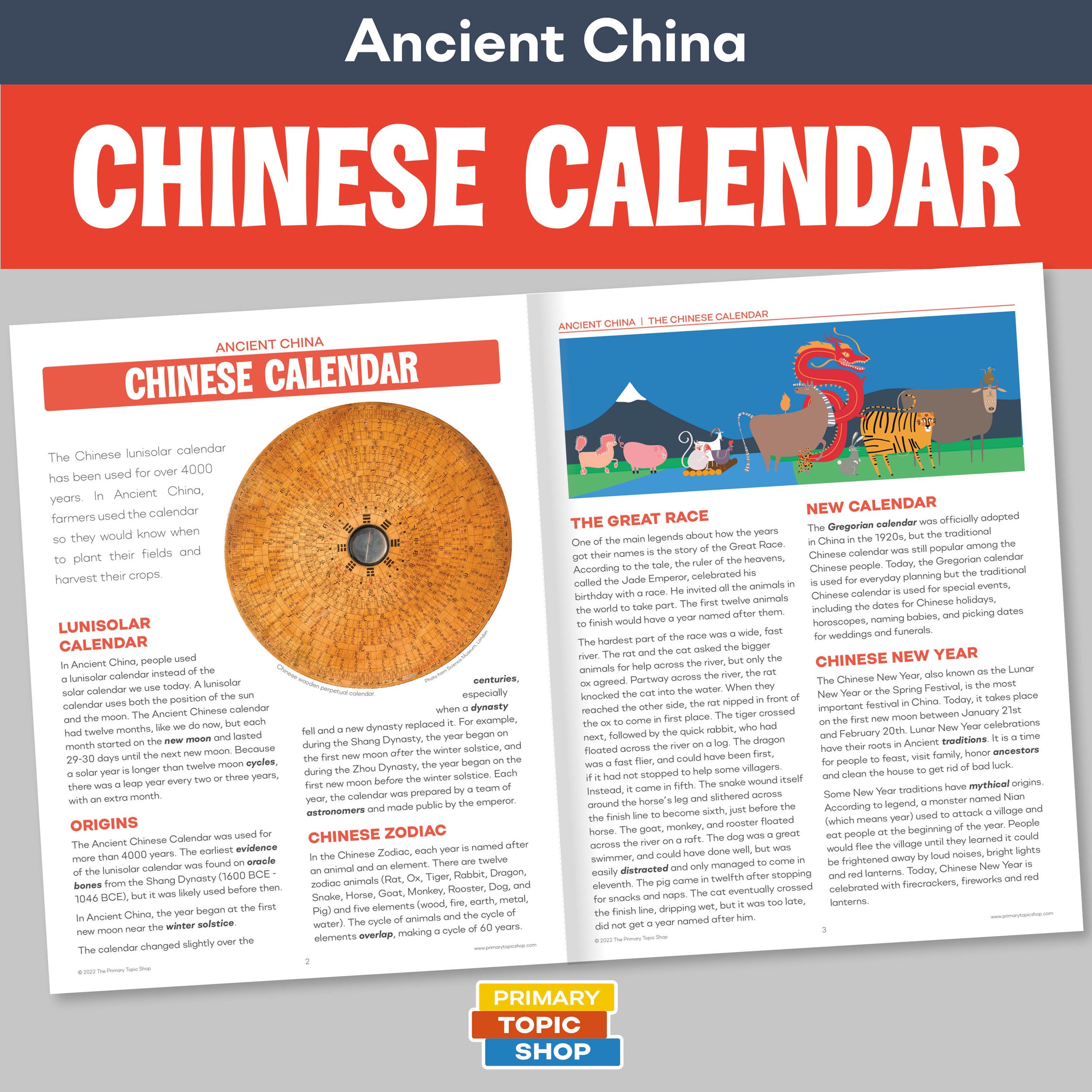Lunar New Year
In 2025, Lunar New Year falls on January 25.
In Ancient China, people used a lunisolar calendar instead of the solar calendar used in many countries today. A lunisolar calendar uses both the position of the sun and the moon. The Ancient Chinese calendar had twelve months, like we do now, but each month started on the new moon and lasted 29-30 days until the next new moon. Because a solar year is longer than twelve moon cycles, there was a leap year every two or three years, with an extra month.
The Chinese New Year, also known as the Lunar New Year or the Spring Festival, is the most important festival in China. It takes place on the first new moon between January 21st and February 20th. Lunar New Year celebrations have their roots in Ancient traditions. It is a time for people to feast, visit family, honor ancestors and clean the house to get rid of bad luck.
Some New Year traditions have mythical origins. According to legend, a monster named Nian (which means year) used to attack a village and eat people at the beginning of the year. People would flee the village until they learned it could be frightened away by loud noises, bright lights and red lanterns. Today, Chinese New Year is celebrated with firecrackers, fireworks and red lanterns.
Find more information, as well as worksheets and activities, in our Chinese Calendar teaching resource.



